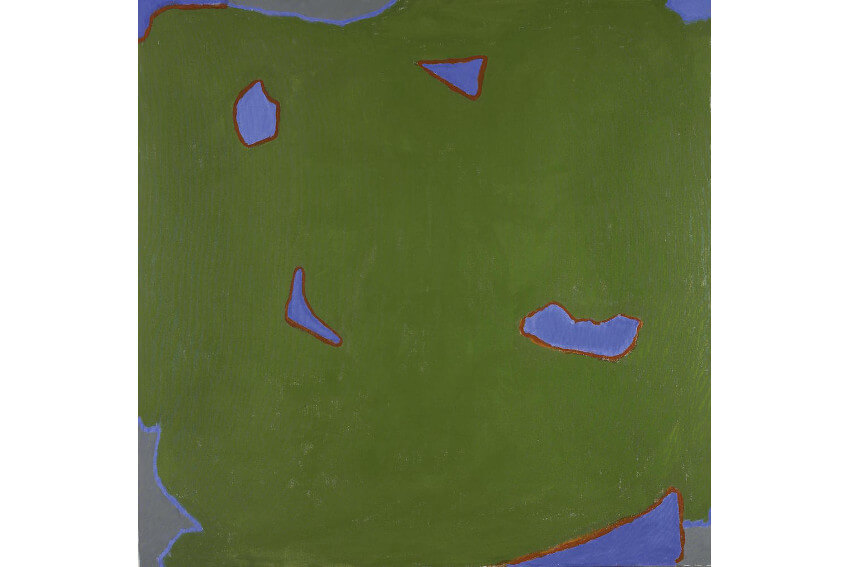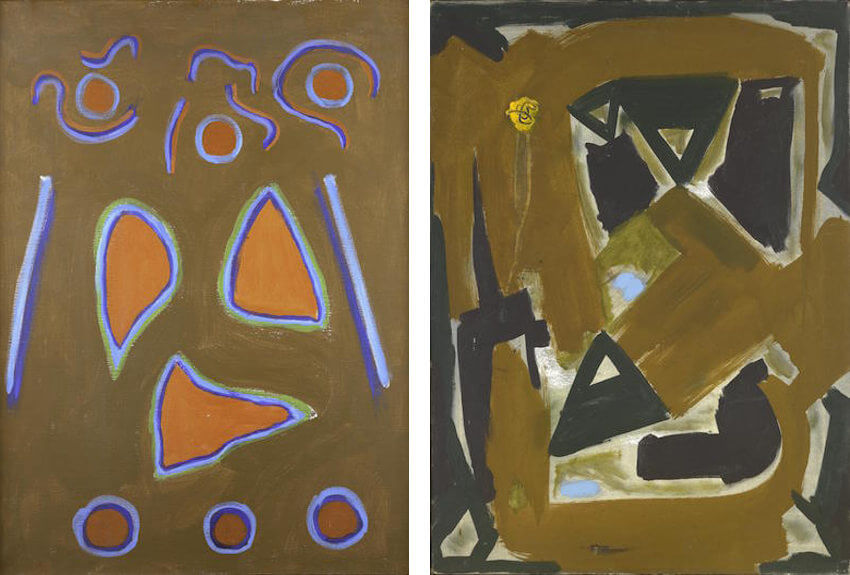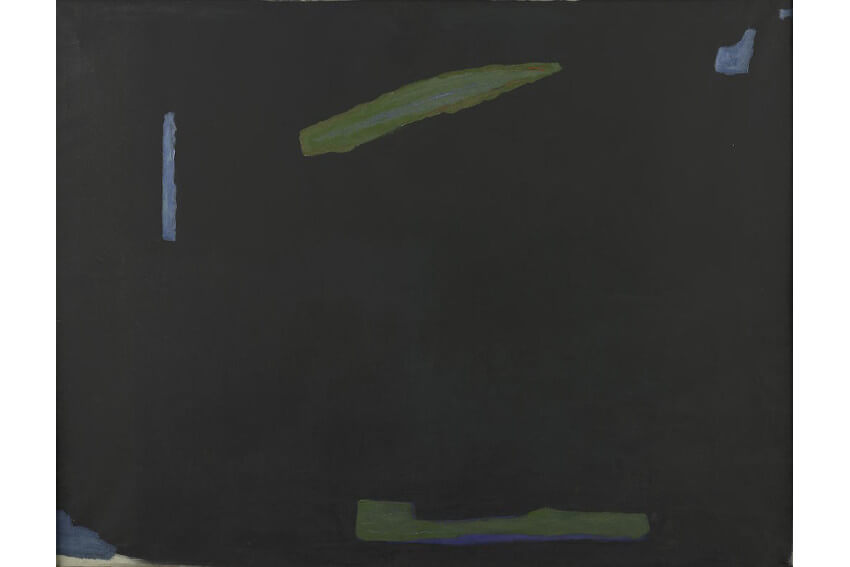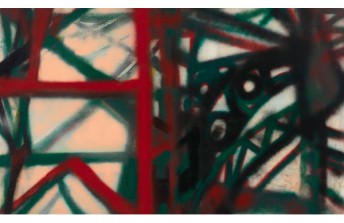The Den Mother of Abstract Expressionism - Betty Parsons
Jan 1, 2018
Betty Parsons died 35 years ago, when I was 13 years old. I never knew her. Theoretically, I guess I could have met her, had I known to try. But I had no idea she existed until it was much too late. I imagine a lot of people regret not getting to know Parsons. She was a Modern Art revolutionary. Though I suspect she had no idea it would, her example inspired me, and I believe many members of my generation, to strive for new models of authenticity and exceptionalism in art. From non-profit art collectives, to artist-run project spaces, to experimental museums, the art world today teems with people and places that value great art over great profit. Parsons is who I thank for that legacy. But she has been written about extensively, in the most prestigious art magazines, by far more accomplished writers than I. There is nothing novel I can report about her. But since she was unique in a way my soul appreciates, I am nonetheless inclined to try. Her nickname, “the den mother of Abstract Expressionism,” appeared in an article in ARTnews from 1979, written by Grace Lichtenstein. The monicker referred to how Parsons believed in, nurtured, and showed the work of Mark Rothko, Hans Hofmann, Jackson Pollock, Clyfford Still and Barnett Newman when no one else in America would. That article also reveals the complexity and depth Parsons possessed as an artist, an aficionado, and as a business person. Meanwhile, an interview recorded with Parsons in 1977 by the artist Helène Aylon and published it in its entirety by Judith Stein in Art in America Magazine in 2013 goes a long way toward revealing what was extraordinary about Parsons the human being. The best way I feel I can pay my respect to parsons is to focus on these two profiles, created by those who actually knew her in life. Here, excerpted from them, are ten quotes that have made Parsons a personal hero of mine for how they remind me what is important when it comes to the creation and appreciation of art.
"Thank God there don’t seem to be any ‘isms’ today. I hate fashions."
Often we try to name the movements of today. Why do we do this? Because labels make products easier to sell, especially to people without much education or real appreciation. Rather than believing in trends, Parsons prioritized what was good, and found joy in what was different.
"I’ve always been fascinated with what I call ‘the invisible presence.’ The most permanent thing in this world is the invisible; you never get away from it"
Some artists think they can only succeed if they possess a marketable identity, or if they make art specifically about a certain topic popular with contemporary audiences. Parsons focused on the unknown. Rather than promoting the art of the obvious, she was attracted to art that revealed what is hidden.
"I believe in tension. If you’re painting a picture, and it has no tension, it has no excitement."
Tension in an artwork might originate from something within it that is unrecognizable to a viewer. Or it might originate from something that is considered vulgar or crude. Other times, tension comes from something we simply do not find beautiful. Rather than looking away from these things, Parsons embraced them, seeing in them opportunities to challenge herself to grow.
 Betty Parsons - Green #1, 1971, acrylic on canvas, © 2018 The Estate of Betty Parsons, Courtesy Alexander Gray Associates, New York
Betty Parsons - Green #1, 1971, acrylic on canvas, © 2018 The Estate of Betty Parsons, Courtesy Alexander Gray Associates, New York
"I’m interested in important paintings, not in the home."
Parsons showed work in rooms with bare white walls and bare floors. She made no extra effort to convince collectors to buy. She saw her job as having two parts: promoting the integrity of the artist, and convincing the public the work was valid for reasons unrelated to how good it might look above their couches.
"I don’t want to be loaded with all these riches—they would bore me to death."
Parsons was born into high society, but rejected the trappings of wealth. After losing everything in the Great Depression, she started from scratch. For the next fifty years, she frequently had a hard time paying the bills. She sold enough work (of her own, and by the artists she represented) to keep the lights on, and considered that to be the definition of financial success.
"The abstract world was considered cold because it didn’t have figures. But it had fire, energy, nature, light, space—it concentrated on all those values."
Parsons had the confidence to believe in her own taste. She understood abstraction long before most Americas. She trusted her own vision, regardless of what the rest of the art world said or did.
"I was always ten years ahead of my time. That’s the story of my life."
When you are not succeeding financially, it is tempting to think it is because what you do has no value. Parsons realized sometimes the reason nobody is buying your work is because they do not recognize it, because it is of the future.
 Betty Parsons - Challenge, 1976, acrylic on canvas (Left) / Sputnik, 1961, acrylic on canvas (Right), © 2018 The Estate of Betty Parsons, Courtesy Alexander Gray Associates, New York
Betty Parsons - Challenge, 1976, acrylic on canvas (Left) / Sputnik, 1961, acrylic on canvas (Right), © 2018 The Estate of Betty Parsons, Courtesy Alexander Gray Associates, New York
"Always identify with the art; never identify with the artist."
Parsons despise some artists but adored their work. She understood artists do not have to be likable, sociable or charming. Artists are not salespeople or politicians. Their work speaks for itself.
"[The artists I represent] get freer and more creative as they go along. I’ve always encouraged that."
Some gallerists encourage artists to find a style that sells then stick to it. Parsons challenged the artists she showed. She believed dynamism and growth are key to getting better, and that sales are the least important aspect of an art career.
"We’re all part of everything."
Parsons was frequently asked her beliefs on social issues. This quote was her response to one such question. She knew art has the capacity to reveal the reality that our universalities far outweigh those things that drive us apart. This quotes has influenced me the most. It bears repeating constantly, because it is so easy to forget.
 Betty Parsons - Requiem, 1963, acrylic on canvas, © 2018 The Estate of Betty Parsons, Courtesy Alexander Gray Associates, New York
Betty Parsons - Requiem, 1963, acrylic on canvas, © 2018 The Estate of Betty Parsons, Courtesy Alexander Gray Associates, New York
Featured image: Betty Parsons - Orange, 1956, acrylic on canvas, © 2018 The Estate of Betty Parsons, Courtesy Alexander Gray Associates, New York
All images used for illustrative purposes only
By Phillip Barcio






